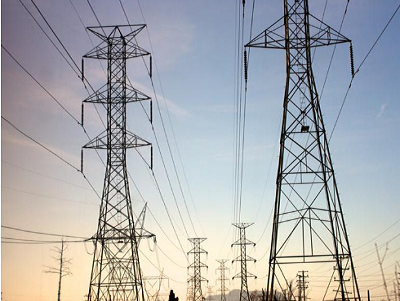
Overhead transmission lines are generally composed of foundations, torri, hardware, insulators, fili, ground wires (Compreso OPGW cavi ottici), and grounding facilities. Above the conductors of overhead transmission lines, the power lines erected to avoid direct lightning strikes on the conductors of the transmission lines are both overhead ground wires (referred to as ground wires), also known as lightning protection wires. In addition to lightning protection, overhead ground wires also play an important role in short-circuit current shunting.
The Difference of Overhead Line and Power Cable
Overhead line: bare metal conductor, erected in the air, fixed on the tower with insulator strings, and insulated by air. Main advantage: basso costo. The disadvantage is that it occupies a lot of land resources (line corridors), which affects the appearance of the city.
Power cable: Insulating medium is used to isolate the metal conductor from the outside world, and it is laid on the ground or underground. The main advantage is that it is more convenient to lay, occupies less land resources, and does not affect the appearance of the city. The disadvantage is that the cost is too high. In terms of safety, the industry currently believes that due to materials and manufacturing processes, the safety of overhead lines is better than that of power cables, and its failure rate is far lower than that of power cables.
The Function of the Overhead Ground Wire
It reduces the chance of lightning strikes the wire directly, and reduces the lightning overvoltage amplitude that the line insulation withstands. When the lightning strikes the top of the tower or the ground wire, the potential of the tower body is very high, and the voltage applied to the insulator string is equal to the difference between the potential of the tower body and the conductor potential. This voltage is generally much higher than the voltage on the insulator string when the lightning strikes the conductor directly. low, will not cause flashover discharge. Tuttavia, if the grounding resistance is large, the potential of the tower body will be very high, and a reverse flashover will occur at this time, which is commonly referred to as “counterattack”.
It has a coupling effect on the wire. When lightning strikes the top of the tower or the ground wire, the potential of the wire will rise due to coupling, so the coupling can reduce the voltage on the insulator string. Perciò, in order to reduce the “counterattack”, when it is difficult to reduce the grounding resistance, you can use the shunting and coupling properties of the overhead ground wire to add a coupled ground wire under the wire.
Since the lightning protection wire is grounded, it can shield the effect of the induction lightning on the wire and reduce the overvoltage of the induction lightning.
Here at Veri Cabke, you can get more information about cables. Benvenuto a Contattaci.